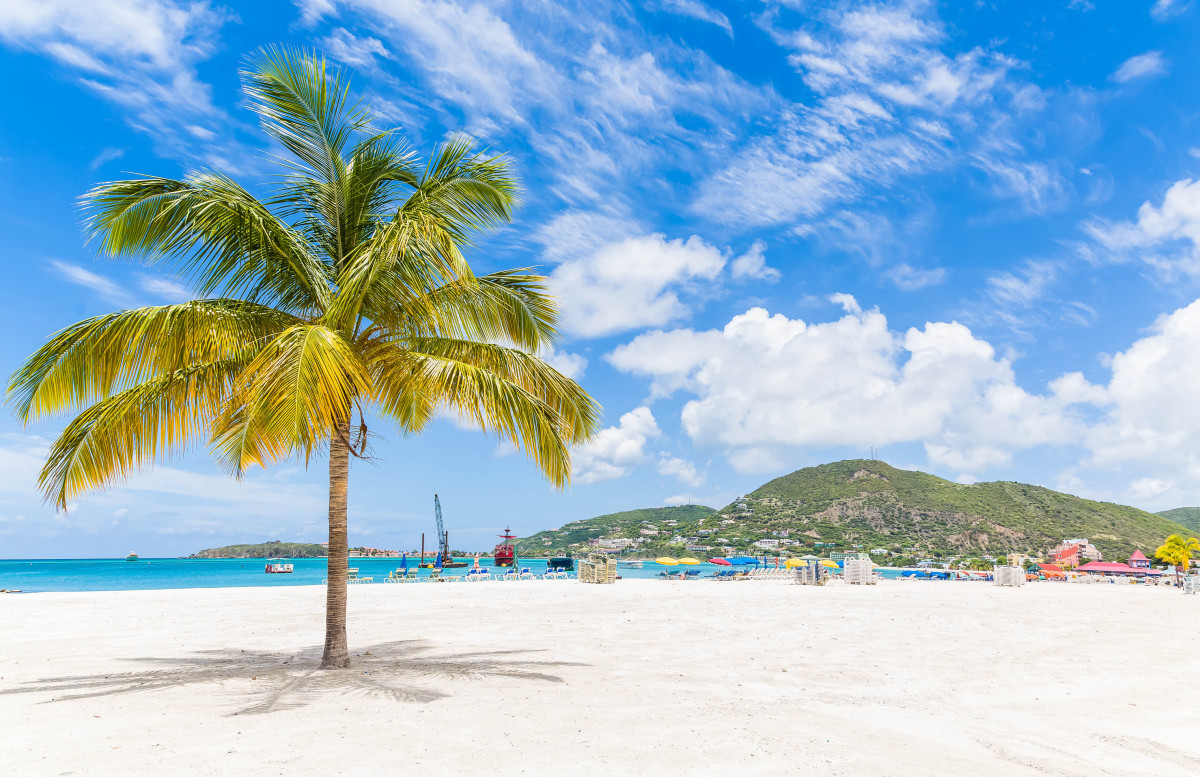
A critical analysis of Sint Maarten’s official macro-economic statistics.
Part 3: A Comparative Case Study
In part 1 of this paper series, we explored the astonishing jump of 43% in the Gross Domestic Product (GDP) of St. Maarten made over the past years. In part 2, we showed how Dutch Side GDP historically includes a large amount that is, in fact, French side GDP. In addition, we showed how import dependency was not accounted for in the GDP numbers. In part 3, we will compare the St. Maarten GDP situation with a case study.
It is difficult to identify an economy that compares well to Sint Maarten. The uniquely binational element of our island makes it difficult to compare the island to other economies.
For a comparison, Aruba has been selected. There are several reasons:
- Governance is similar
- Aruba has better statistics than St Maarten
- Aruba also falls under the International Monetary Fund (IMF) article 4 reporting, just like St. Maarten
- Aruba is largely tourism dependent with a similar dependency on the North American market.
Given the facts above, we think Aruba makes for the best regional comparison. Later in this part, we will return to the “French side” element of the comparison.
Methodology of comparison
Aruba’s tourism product is much more stay-over oriented than Sint Maartens’. In order to attempt a comparison, stayover and cruise have been converted to stay-over days. Tourism Exit Surveys reports of Sint Maarten indicate that cruise passengers spend more than Stay-over guests.
Aruba figures show the opposite. It seems logical that a guest that spends 24 hours on the island and rents an accommodation, spends more than a guest on a 10-hour day trip.
Revenue Per Available Room or RevPAR is an important industry standard for measuring hotel productivity. Aruba’s RevPAR is about $180. Based on tax collection info on St. Maarten its local equivalent is likely in the area of $100-$110. Considering that Aruba’s tourism market is a lot less seasonal and Aruba enjoys consistently higher occupancy, there is little reason not to accept this substantial RevPAR spread.
The years 2015 and 2016 have been chosen, because this is the pre-hurricane Irma period. Elements like trust funds and liquidity support or insurance payouts do not come into play for St. Maarten’s GDP over these two years. 2016 is covered by the 3 available St. Maarten GDP data sets that we compare in this series of papers.
Results of a St. Maarten – Aruba Gross Domestic Product (GDP) comparison
When basic economic data of country St. Maarten and Aruba are compared, one finds that:
- Tourism income (receipts) as a percentage of the Gross Domestic Product (GDP) are similar for Aruba and St. Maarten
- Tourism receipts per visitor days are lower in St. Maarten than in Aruba this would be expected with more cruise and less stay-over in St. Maarten
- Receipts per capita are much higher in St. Maarten than in Aruba
- GDP per Capita is much higher in St. Maarten than in Aruba
In the context of part 1 and 2 highlighting the case for St. Maarten, GDP being 43% higher than the historical norm, as well as the French Side expenditure being included in the Dutch Side tourism expenditure statistics, the following conclusion is of interest.
- While Aruba has similar Travel Exports /GDP percentages as St. Maarten, St. Maarten has a lower Travel Exports per visitor day. However, St. Maarten has a higher Value Added (GDP contributor in trade and hotel French side) / Travel Exports expenditure percentage.
This is contradictory. If St. Maarten has an overestimated tourism expenditure per visitor day, because of the French side on an already lower than Aruba daily expenditure, it would seem highly unlikely that St. Maarten would create substantially more Value Added, with much less turnover.
If the above numbers would be correct, St. Maarten would be making substantially more profit margin from substantially less turnover. If you subtract the French Side turnover it makes it even more unlikely to be accurate.
Value Added Hotels & Food Service, Value Added Trade.
The above forms the first substantial inconsistency in how GDP is calculated in the two countries. The second inconsistency pertains to the categories Value Added Hotels & Food Service and Value Added Trade. When these are compared, the following can be said:
- In both these categories that are highly dependent on tourism, we see that at similar percentages of Value Added/Tourism receipts, the value added per capita in Sint Maarten is substantially higher.
- 1 would indicate that earnings and income derived in Hospitality and Trade are substantially higher in Sint Maarten than in Aruba, however 3 indicates the opposite.
- Considering that hotels in Aruba enjoy a substantially higher RevPAR. Higher RevPAR is equal to higher per room income. Higher per room income would justify higher earnings and income and value added. Lower RevPAR would indicate lower earnings and income.
Value Added, per tourism dollar spent, in the hotels and restaurant and trade sector is substantially higher than it is in Aruba. This while RevPAR and the stayover/cruise ratios for Sint Maarten are substantially lower.
Paper 2 of in this series showed that the French Side Tourism Exports are allocated to Dutch Side GDP. It is showing up as increased Value Added in sectors where it should not be registering. Hotels and Restaurants are not likely to benefit from a higher Cruise/Stayover ratio. It is likely that Value Added in this sector is substantially lower than is being reported.
The official GDP statistics seem to indicate the opposite of what the evidence indicates.
The actual population figures of Sint Maarten have been an issue for years. The official number hovers around 40K, the unofficial number is estimated higher. Most often we hear a figure of approximately 60K. That is a substantial difference. However, 10+ years after the last census evidence remains solely anecdotal. Supposedly Sint Maarten has a very high undocumented and noncompliant population.
The higher population estimate would bring the GDP and Value Added per capita numbers in line with the Aruba data set, assuming of course that the GDP data set is accurate.
The evidence to suggests that the assumption of “high GDP per Capita and low Tax/GDP ratio due to a largely noncompliant/undocumented population” lacks any numerical or logical basis.
- Part 2 has established that our method of calculating travel exports, includes travel exports on the French Side. This amounts to French Side GDP, not Dutch side GDP.
- This would lead to the conclusion that Dutch Side Travel Exports / Dutch Side GDP should be lower than the reported Travel Exports/ Dutch Side GDP number.
- If Travel Exports Dutch Side are lower, at a similar Travel Exports /GDP ratio as Aruba, GDP on the Dutch Side should be substantially lower.
- 1. Would be more in line with the historical data (pre- hurricane Irma)
- Whether there is a large noncompliant population can only be expressed in GDP per capita in relation to Tax /GDP. While Tax /GDP is reported low, GDP per capita is high. While Aruba has a higher Tax /GDP ratio, Taxes per Capita are similar. Here once again the conclusion needs to be that regardless of the population size, there is an issue with the GDP number. The difference is substantial. It seems unlikely that Value Added by undocumented/noncompliant can be such a large part of the GDP. Undocumented/noncompliant are unlikely to be big businesses.
Is the elephant wagging its tail, or is the tail wagging the elephant?
Using an inflated GDP number and then concluding that there is a large subset of non-compliant taxpayers, which needs to be tackled by improving compliance amounts to the tail wagging the elephant. This is a red herring argument. It polarizes the population and because it is based on false assumptions it will never be adequately solved.
If the Dutch Side statistics include the entire island Tourism Expenditure and all evidence points in the direction that it does, it is laying claim to a substantial part of French Side GDP.
This French Side GDP needs to be subtracted from the Dutch Side GDP. The French Side is a different economy and the Dutch Side cannot tax French Side production.
Subtracting French side GDP leads to much lower GDP per capita rates for the Dutch Side and much higher tax to GDP ratios.
Our research Excel sheet includes Travel Exports figures corrected for the French Side at -20%, -30% and -40%. If the Aruba Travel Exports / GDP ratios and Value Added per Segment ratios are applied to the corrected numbers, St. Maarten has considerably lower GDP figures.
It is safe to argue that where Hotels and restaurants are concerned, the percentage of value added / Travel Exports should be even lower, as St. Maarten enjoys a considerably higher percentage of cruise passengers of total visitor days and this spend does not benefit hotels and benefits food service less.
Modeling for -30% of Travel Exports belonging to the French Side and a reduction of 20% on the Value Added of hotels and restaurants due to a higher percentage of cruise than Aruba, leads to a reduction of GDP from: 2.7 billion guilders to 1.9 billion guilders. GDP at 1.9 billion falls in line with the historical series for GDP Sint Maarten as well as correlating quite well to Aruba’s GDP.
It also equates as per CFT estimates to a tax to GDP ratio of 25% with 466 million in government revenue.
If the 215 million in fund premiums collected by the (social funds) SZV in 2016 are added in (which they should be as per international OECD standards) the tax to GDP ratio was around 36%

